At the end of my first year at William & Mary, I made a list of objectives I intended to accomplish over the next four years. Among the goals I had set for myself was a series of conferences I’d like to attend to present my research. While I’d presented at conferences before, I was more intentional about this list than I’d been in the past, identifying potential organizations and places rather than waiting for whichever relevant opportunities came up.
Since making that list, I’ve been working my way through those conference goals. In 2020, I presented virtually at SECAC, and have become more involved in that organization by serving as a digital reviews editor. In 2020 and 2021, I met my goal of presenting at an international conference by speaking at two virtual sessions, Musex and the annual meeting of T2M. I’ve maintained my involvement with the Space Between Society by presenting at subsequent conferences, participating in its mentorship program, and serving as the Graduate Representative on the Advisory Board.
This year has been about taking on the big conferences relating to my research interests, the multi-day, multisession extravaganzas that bring together hundreds if not thousands of scholars, artists, and other presenters. In March, I organized and chaired a virtual session for CAA. In February 2023, I’ll be going to New York to present on my Museums & Crisis course.
And last week, I presented my dissertation research at the annual conference of the American Studies Association, which took place in New Orleans.
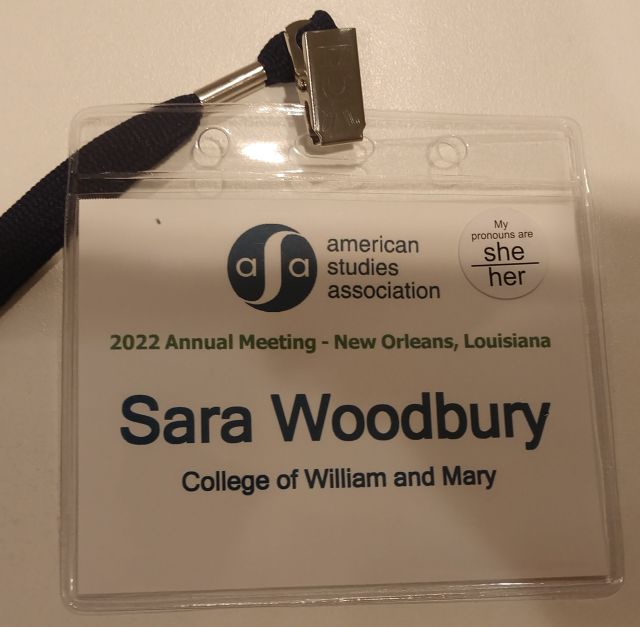
Although this was my first time attending the conference, it isn’t my first experience with ASA. I attended sessions at their virtual conference last year, and have been a member for the past few years. This also wasn’t my first time attending a big conference. In 2013, back when I wasn’t sure whether I wanted to continue working in American art or return to the early modern materials I had initially studied, I presented an abridged, updated version of my Master’s Qualifying Paper at the annual meeting for the Renaissance Society of America in San Diego. Shortly after that experience, I accepted the role of Curator of Collections and Exhibitions in Roswell, which more or less set me on course for a career focusing on American art and material culture, but I’m glad I went.
Admittedly, despite wanting to present at ASA, I was hesitant to commit. I teach M-W-F this semester, so I knew I’d have to cancel at least one class to accommodate the conference. I’ve also been wary of flying since the onset of the pandemic, an uncertainty that’s only increased since my flight got canceled in Newark and I had to drive home. I also knew it would be expensive, despite getting funding from the College, and there’s never a good time to pay for an expensive conference. We’ve also been having some unexpected but necessary work done on the house, and since my schedule is more flexible than Brandon’s, that means I’ve had to be on-site to let in contractors and sign off on the paperwork. As such, I worried that going to the conference would potentially disrupt some much-needed work, whether it was academic or domestic.
In the end, though, I decided to go because I didn’t know if I’d get a chance next year. Until I know next year’s theme, I don’t know how I can spin my research to reflect ASA’s conference focus. So I opted to present, but I compromised by choosing not to stay for the entire conference.

I started getting ready a few weeks before the conference. I didn’t have time to write a brand-new paper between my dissertation, teaching, and ongoing curatorial work, so I pulled sections from my prospectus and the second chapter and combined them into one 20-minute talk. As a result, the first half of my talk provided a historical and theoretical overview of art outreach exhibitions, while the second half focused on a case study of the Neighborhood Circulating Exhibitions program, with a particular focus on high schools as the most frequent exhibition sites. Although I’d intentionally left the abstract vague when I wrote it, as I wasn’t sure how much research I’d have ready to present at that point, I decided to focus on the Met shows because I did specifically name museums in my proposal. Additionally, I wanted the opportunity to present material beyond the CACP to show that I’m not focused exclusively on that subject. My Space Between talk from June was a compromise, featuring both the Met and the CACP. This talk, by contrast, went all-in with the Met, and the CACP only came up during the Q&A when I was giving an overview of the entire dissertation.
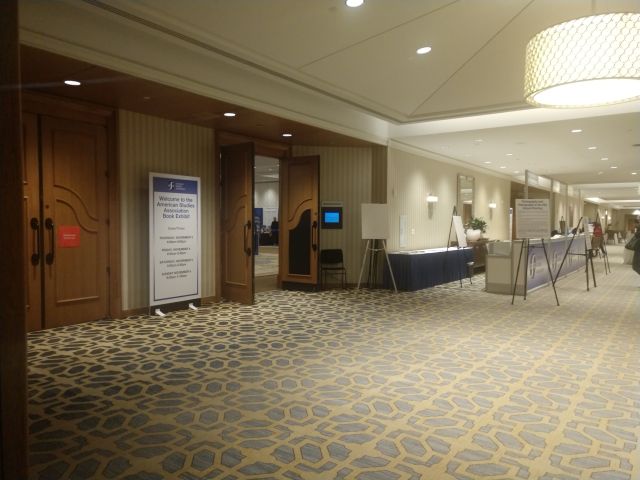
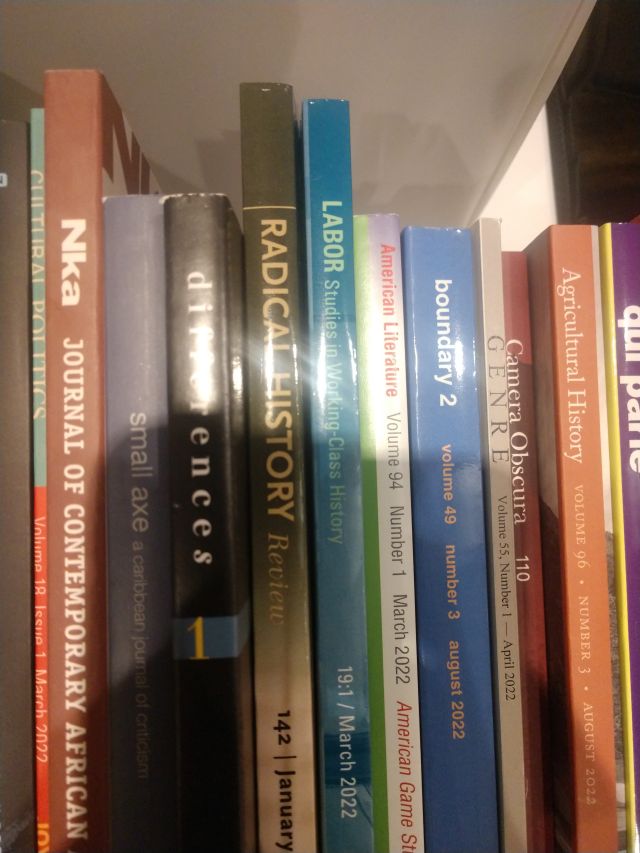
I flew into New Orleans on Wednesday afternoon and departed early Saturday morning. That meant I had two full days in the city. My presentation took place on Thursday, the first day of the conference. I was in the 8 am slot, so the turnout was admittedly small, but it was still a positive experience. I enjoyed learning about the work of my co-presenters, and the people who did attend were very interested in what I’ve been researching. Dr. Jordie Davies and Ayesha Singh discussed their interdisciplinary collaboration on monuments, and specifically their on-site projections that call out settler colonialism, racism, and other inequities perpetuated by the state in both the United States and India. John Kapusta discussed interracial collaborations through energy-based disciplines such as yoga, akido, and dance during the 1960s and 1970s, complicating the creative counterculture of the period as one focused exclusively on white writers and artists. I attended additional sessions in the morning, then spent the afternoon volunteer at the registration desk, giving out badges and reviewing COVID protocols with other conference participants. During downtimes, my fellow volunteers and I shared our research and offered suggestions to one another. In the evening, I attended the conference’s book exhibition, where I was able to see the latest publications from various academic presses and take pictures of titles relevant to my work.
On the second day, I didn’t go to the conference at all. Although there were sessions that interested me, I decided to check out New Orleans instead, as I’d never been before and had no idea when I’d be in the area again. Over the course of the day, I wandered around the French Quarter, rode the trolley to City Park, walked along the Mississippi River, and tried beignets, among other things. I have a side interest in garden design history, so while I was at City Park I made a point of visiting the Botanical Garden, which retains its original WPA rose garden and various buildings from that era. I don’t know if I’ll ever get around to researching WPA garden history, but I took lots of reference photos just in case.
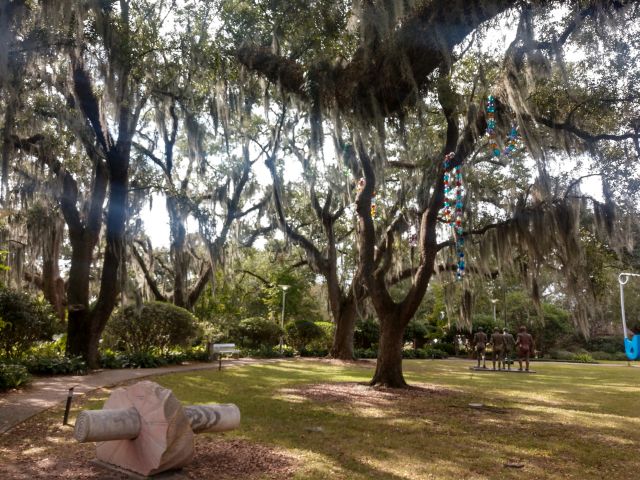
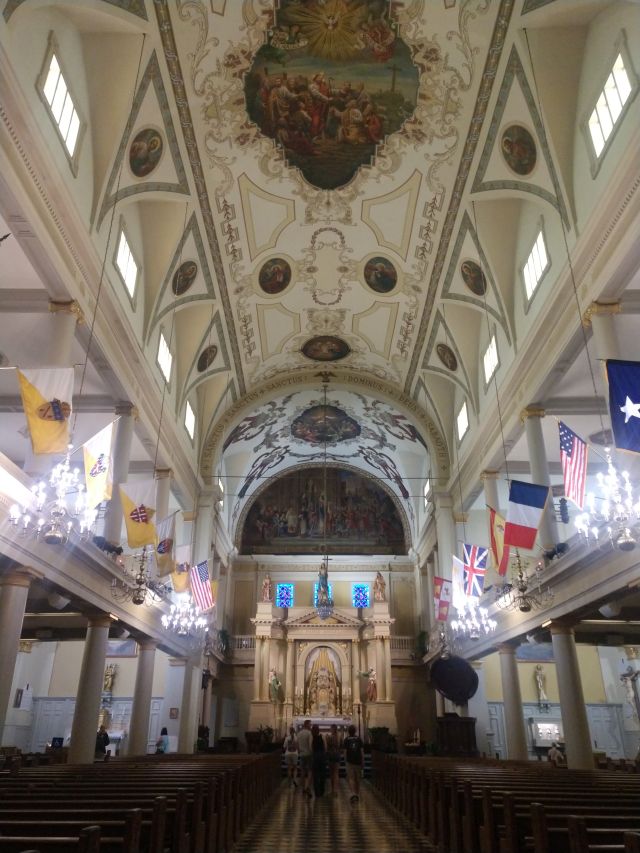


New Orleans reminded me of a lot of places while still being its own thing. Overall, it most closely resembled a larger, gritter version of St. Augustine, while the wrought-iron detailing on the buildings recalled similar edifices Brandon and I have seen in Pensacola. The narrow sidewalks, with the traffic all but brushing your shoulders as it passes, reminded me of Florence and Paris. The trolley cars running through downtown made me think of Helsinki, while the revelers seeking out bars, beignets, and souvenirs reminded me of the touristy sections of New York, Boston, and other East-Coast American cities. It reminded me of all those places, but it’s also its own entity, as a jazz wedding procession making its way down Tchoupitoulas St emphasized to me. New Orleans felt familiar and new to me at the same time.
New Orleans is also a place that brings up complicated feelings even as you’re enjoying yourself. On the one hand, it’s a fun city to visit, with a lot of interesting old architecture, fabulous food, and no shortage of interesting things to do. I loved trying the beignets, had a great time walking through the gardens, and riding the cabled-powered trolleys. I liked hearing the saxophonists, trumpeters, vocalists, and other musicians in the French Quarter. I enjoyed the peculiar deja-vu that comes with visiting a place that reminds me of so many others while also being unlike them.

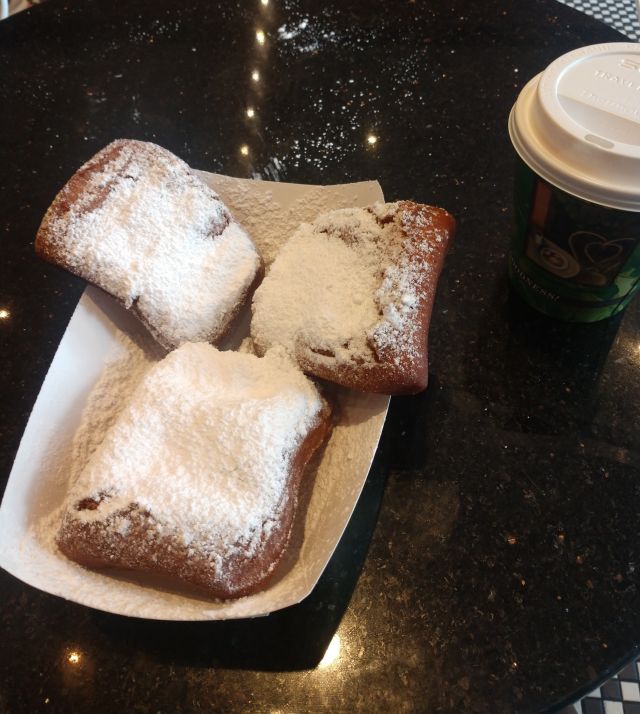
But as I experienced the city, I also considered the histories of exploitation, inequity, and harm that underpin this country. As I flew into the city and saw how close it is to both the Gulf of Mexico and the Mississippi River, I thought about Katrina, Ida, and the other climate disasters that have affected the region. Looking at the steamboats docked on the river, I thought about Walker Johnson’s River of Dark Dreams and a capitalist system that relied on enslavement and rampant resource consumption, with riverboats more profitable when operated to the point of sinking or explosion rather than maintained. When I visited the St. Louis Cathedral, I thought about Catholicism’s role in enabling settler colonialism even as I admired its architecture and decoration. As I rode the trolley, I remembered the readings I’d done in my Mobilities class about the fallout of Katrina and evacuation plans than relied almost exclusively on cars, to the detriment of the city’s most vulnerable residents. I thought about my first museum job as a docent at Victoria Mansion in Portland, Maine, and the fact that its first owner, Ruggles Sylvester Morse, not only based his hotel business in New Orleans, but was an enslaver and Confederate sympathizer who displayed a portrait of General Lee in his home. I thought about New England’s complicity in maintaining enslavement through the cotton it consumed in its textile mills, among other things. I thought about how I perpetuate harm by living in a system that privileges white people over all others.

These reflections complicated my visit, but I didn’t leave the city in despair. Before heading back to the Riverfront district, I stopped by the Singing Oak, one of the landmarks of City Park. It’s an old tree covered with wind chimes, a sonic installation by Jim Hart. I wasn’t the only person visiting the tree. Under the shade of its massive branches, a Black person was doing yoga. Nearby, two white people shared a picnic. As I sat down under the tree, I remembered Kapusta’s talk about creative counterculture, and the potential for energy-based practices to ignite positive change. Moved by the energy emanating from the afternoon, I pulled out my sketchbook and drew the tree.

As a youngster, my best friend Fred introduced me to Dixieland Jazz, New Orleans type. My Dad’s office in Washington D.C. afforded me with free railroad passes, so we took off for N. O. with Fred dodging the conductor by hiding in the men’s room. We listened to small bands until my ears rang, along with a college prof. from Fred’s family who dined with us, and then left for “more music.” He encountered a prostitute who invited him to her room where he was
assaulted by thugs. They stripped of money and clothes except for a short T shirt in which snuck in the back entrance of his hotel at 3 AM,
sadder but hopefully wiser.